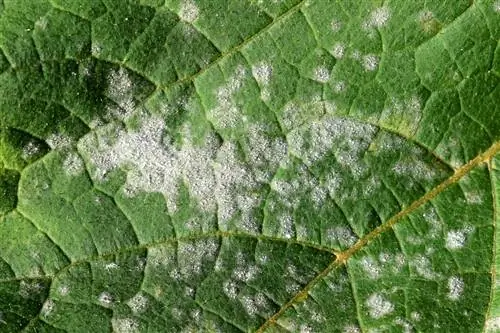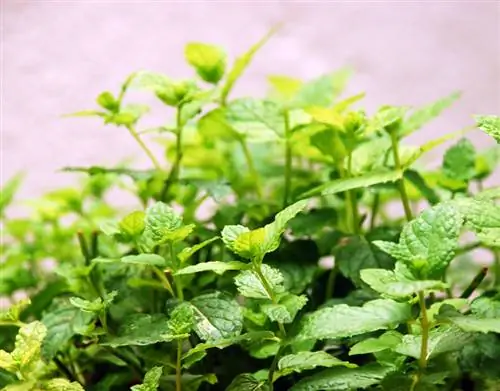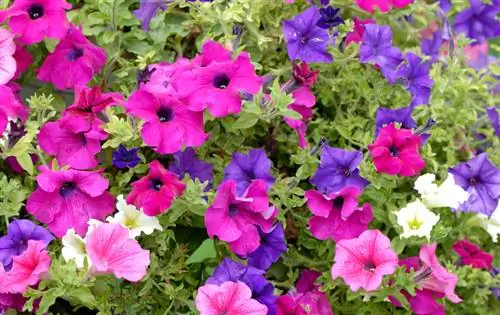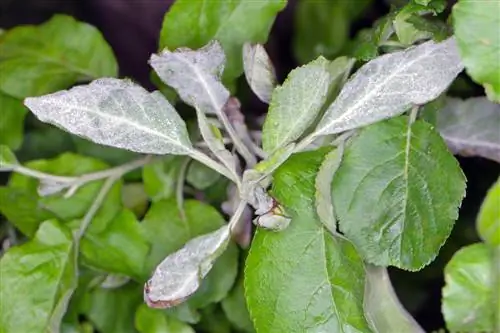- Author admin [email protected].
- Public 2023-12-16 16:46.
- Last modified 2025-01-23 11:22.
Chrysanthemums bring color to our autumn gardens with their late flowering from August to November. The plants are considered very robust and are only affected by a few diseases.
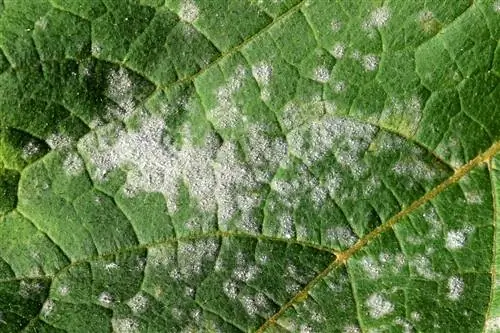
How do I recognize powdery mildew on my chrysanthemums?
You can recognize powdery mildew on chrysanthemums by awhite fungal lawn on the surface of the leaf. This initially only appears as white, mealy spots and quickly spreads. You can easily wipe off the coating by hand.
What causes powdery mildew on chrysanthemums?
Severe drought leads to powdery mildew on chrysanthemums. This is where the name “fair weather mushroom” comes from. The plants are particularly at risk when dewdrops appear in the morning but warm, dry weather prevails during the day. The fungal spores are spread by the wind and settle on the tops of the leaves. In addition, high doses of nitrogen-containing fertilizer cause the leaves to soften. This makes it easier for fungi to penetrate the leaves.
What helps against powdery mildew on chrysanthemums?
There areseveral home remedies that help against powdery mildew infestation on chrysanthemums. The effect is based on a change in the pH value, which is not tolerated by the mildew fungi. A tried and tested home remedy is a mixture of milk and water that is sprayed on the plants. Only use whole milk with a high content of lactic acid bacteria. Baking soda mixed with water and canola oil can also serve as a fungicide. Before treating your chrysanthemums for powdery mildew, you should remove all affected parts of the plant.
How do I prevent powdery mildew on chrysanthemums?
When planting and caring for your chrysanthemums, you can take preventive measures against mildew:
- Make sure there is sufficient planting distance so that dewdrops can dry quickly.
- Water the plants regularly in dry conditions.
- Avoid over-fertilization with nitrogen by fertilizing with compost.
Tip
Field horsetail tea prevents mildew
As a preventative measure against powdery mildew, you can regularly water or spray your plants with field boxham tea. The plant contains a lot of silica, which strengthens the surface of the leaf cells. This makes it harder for fungi such as mildew to penetrate the leaf.

